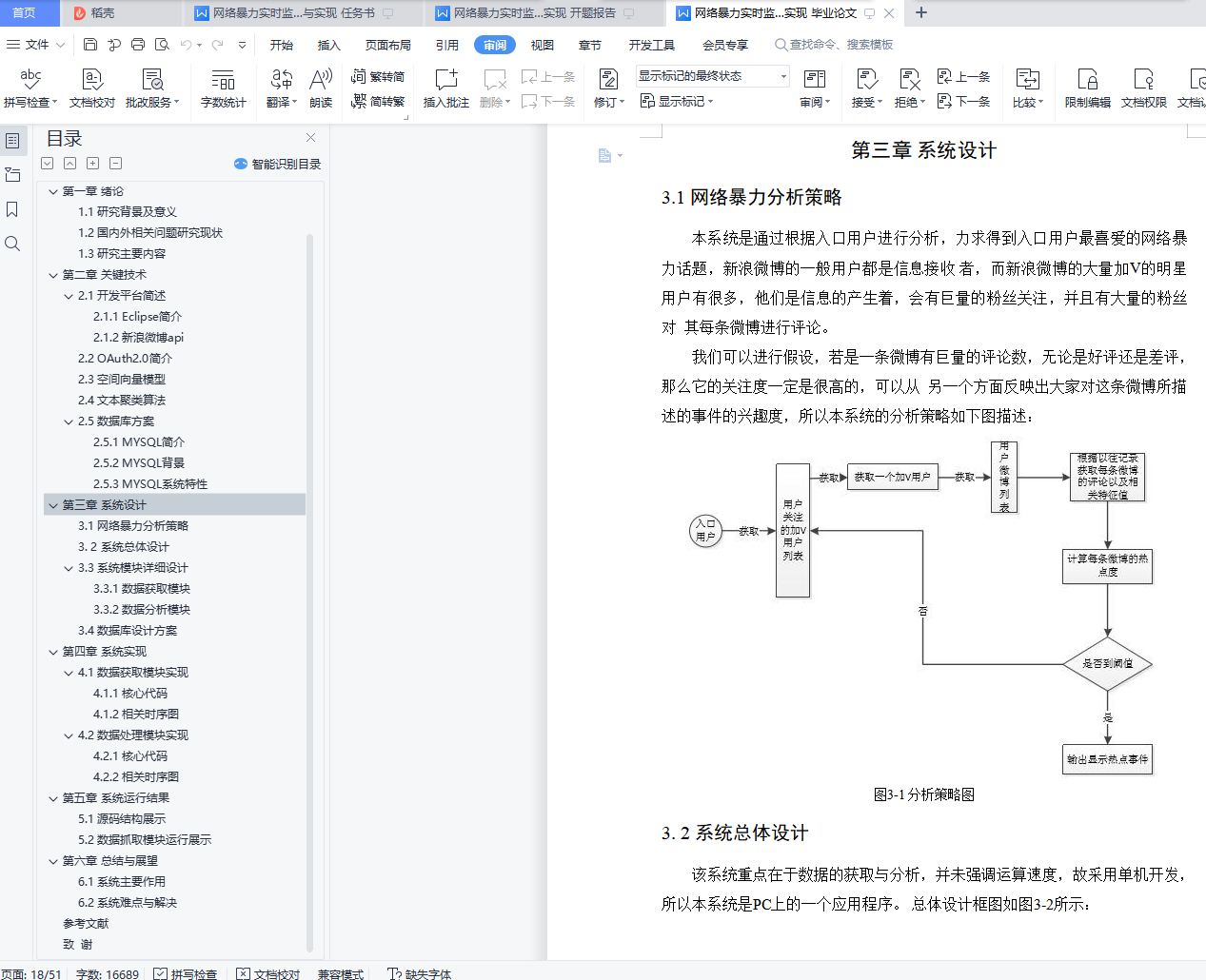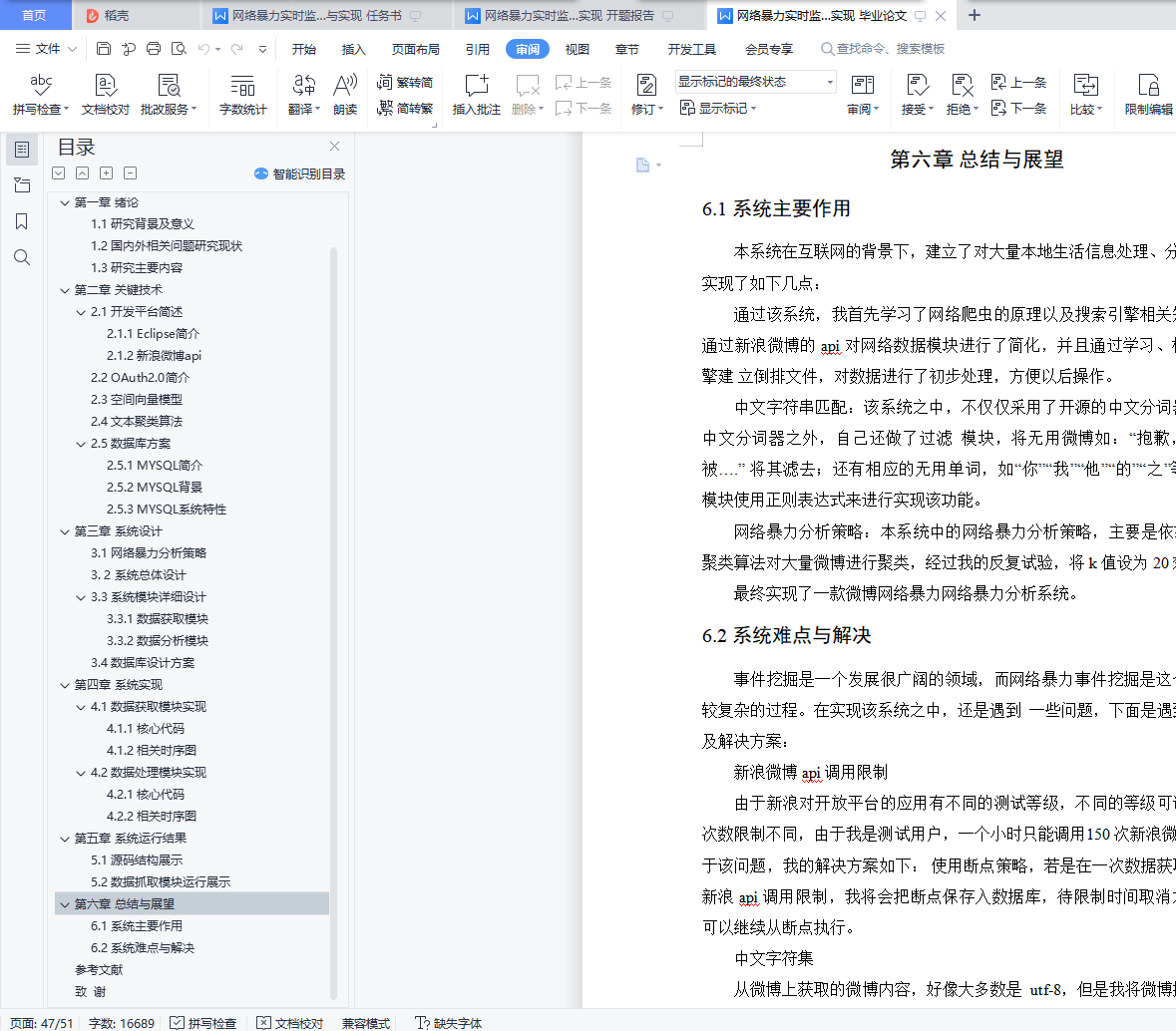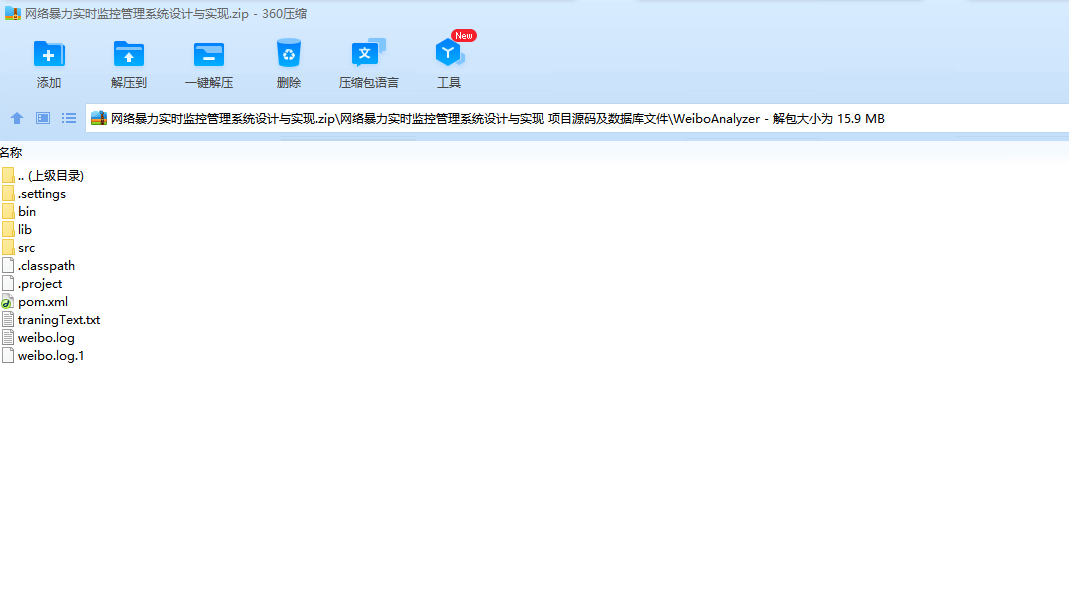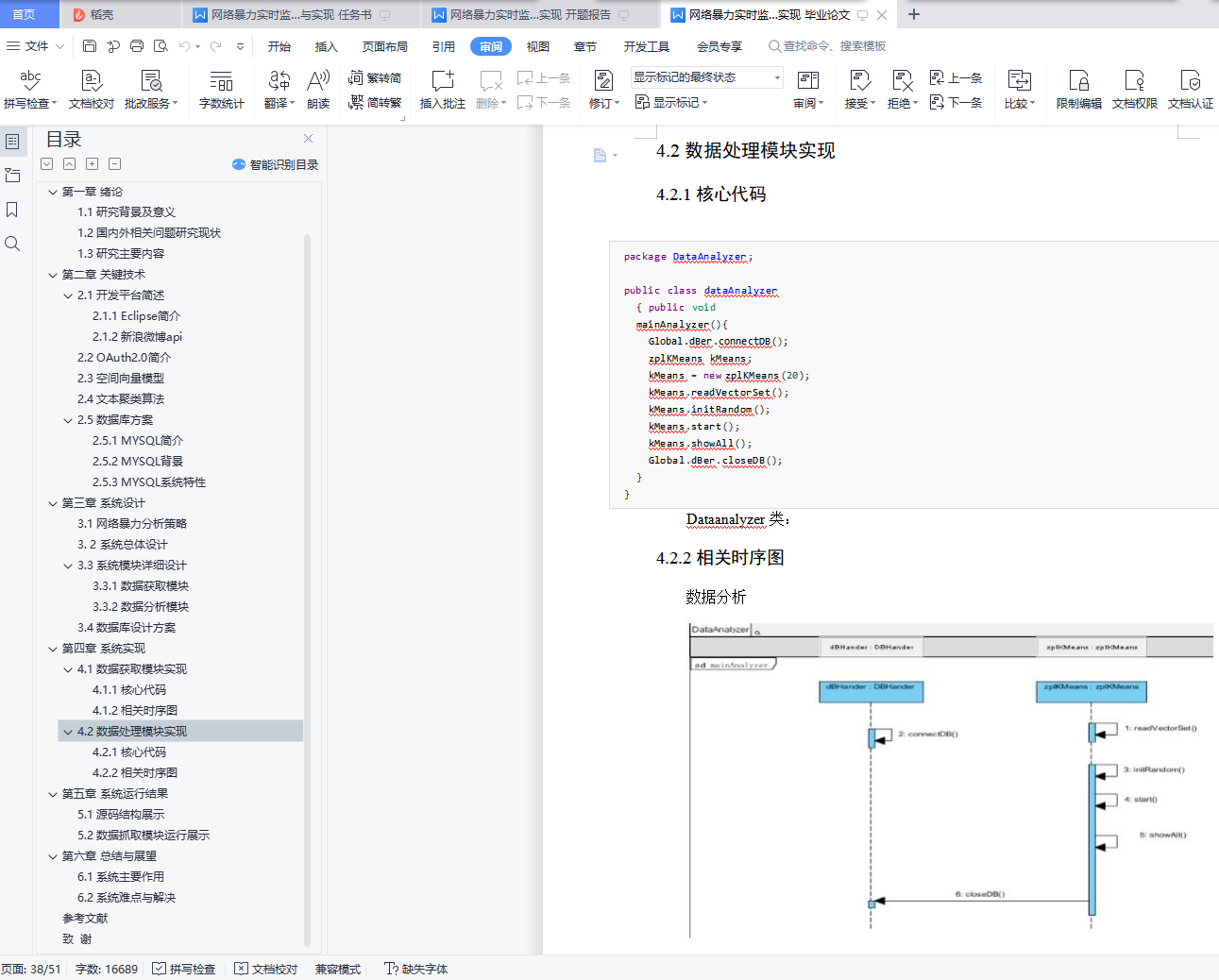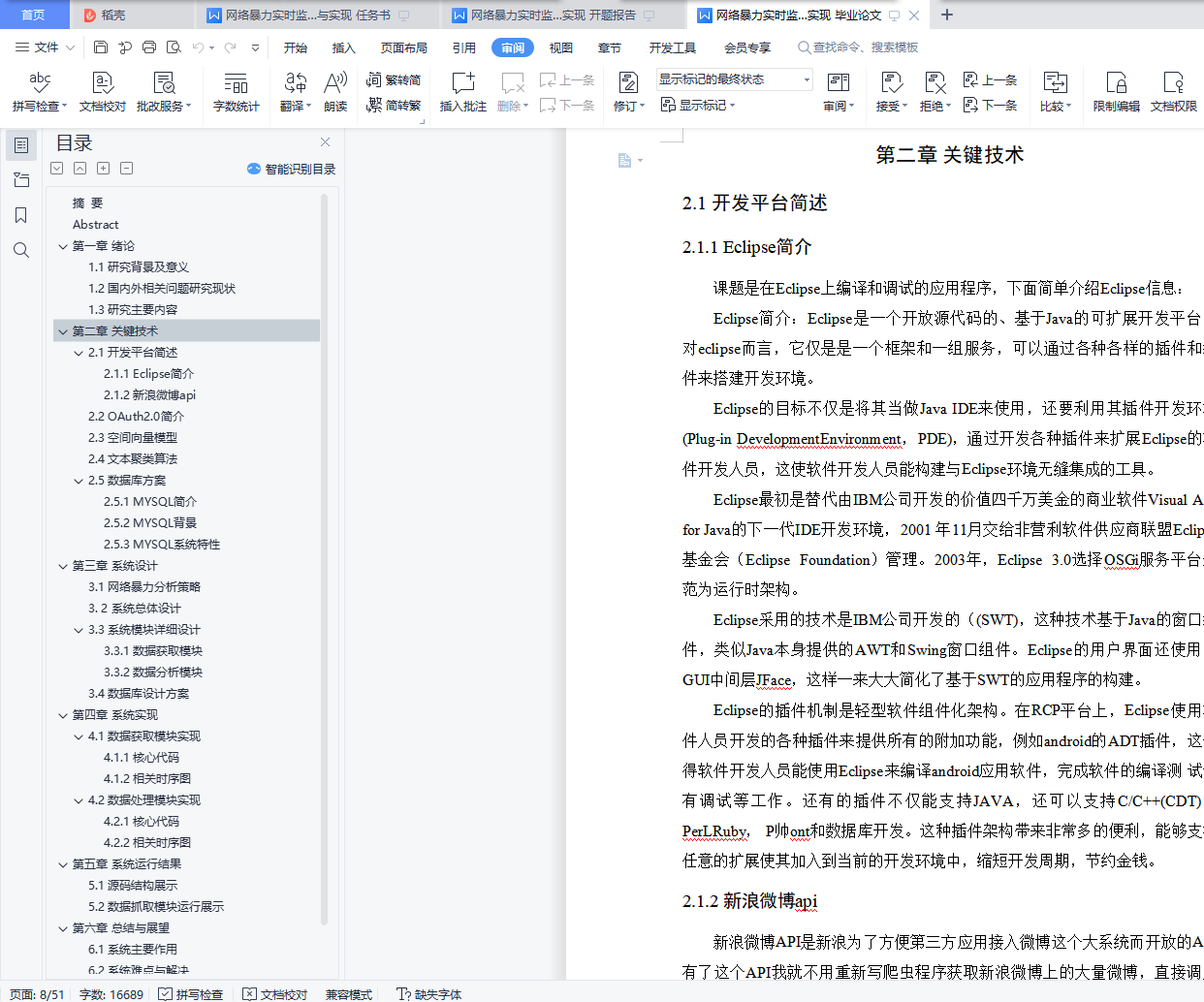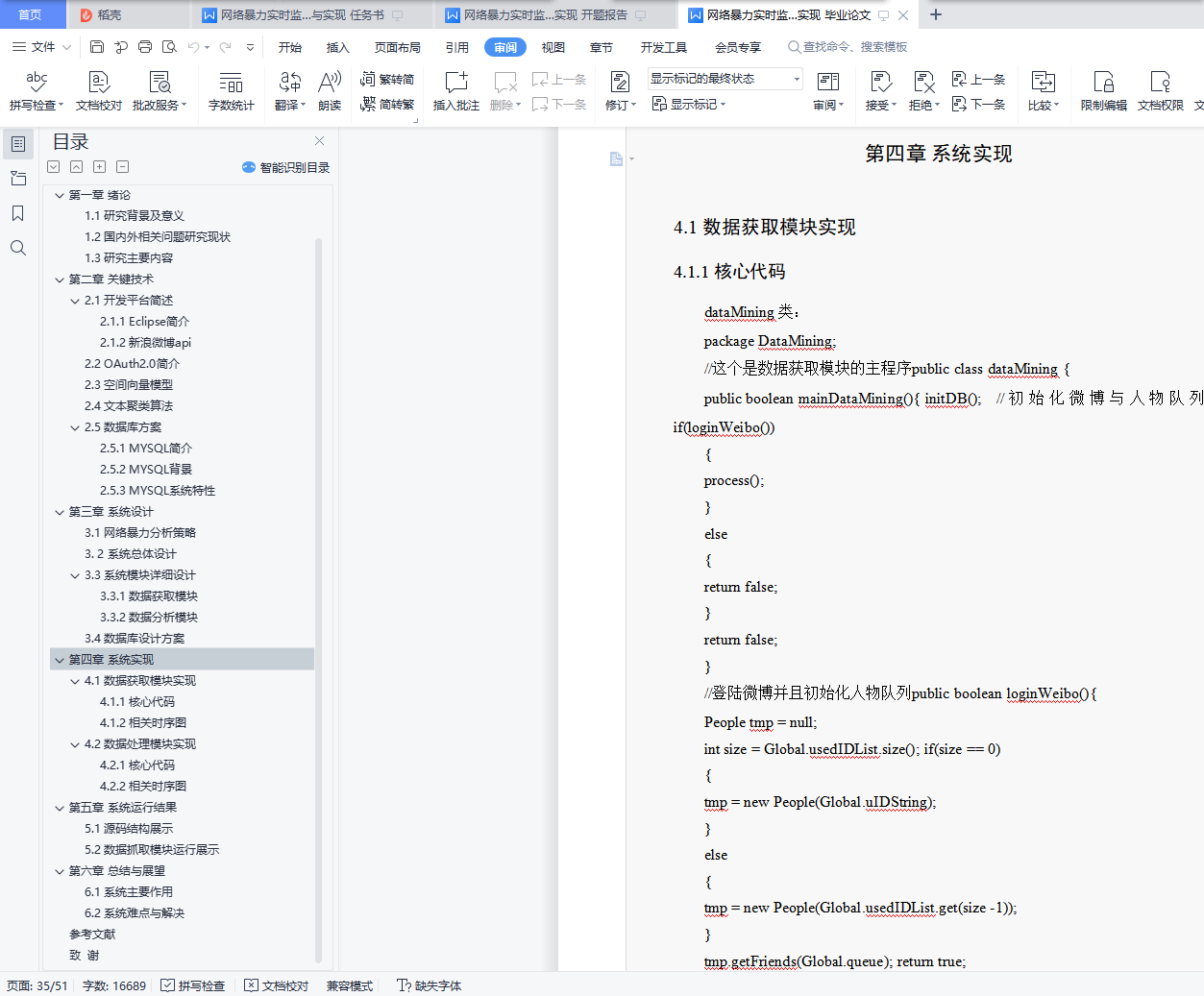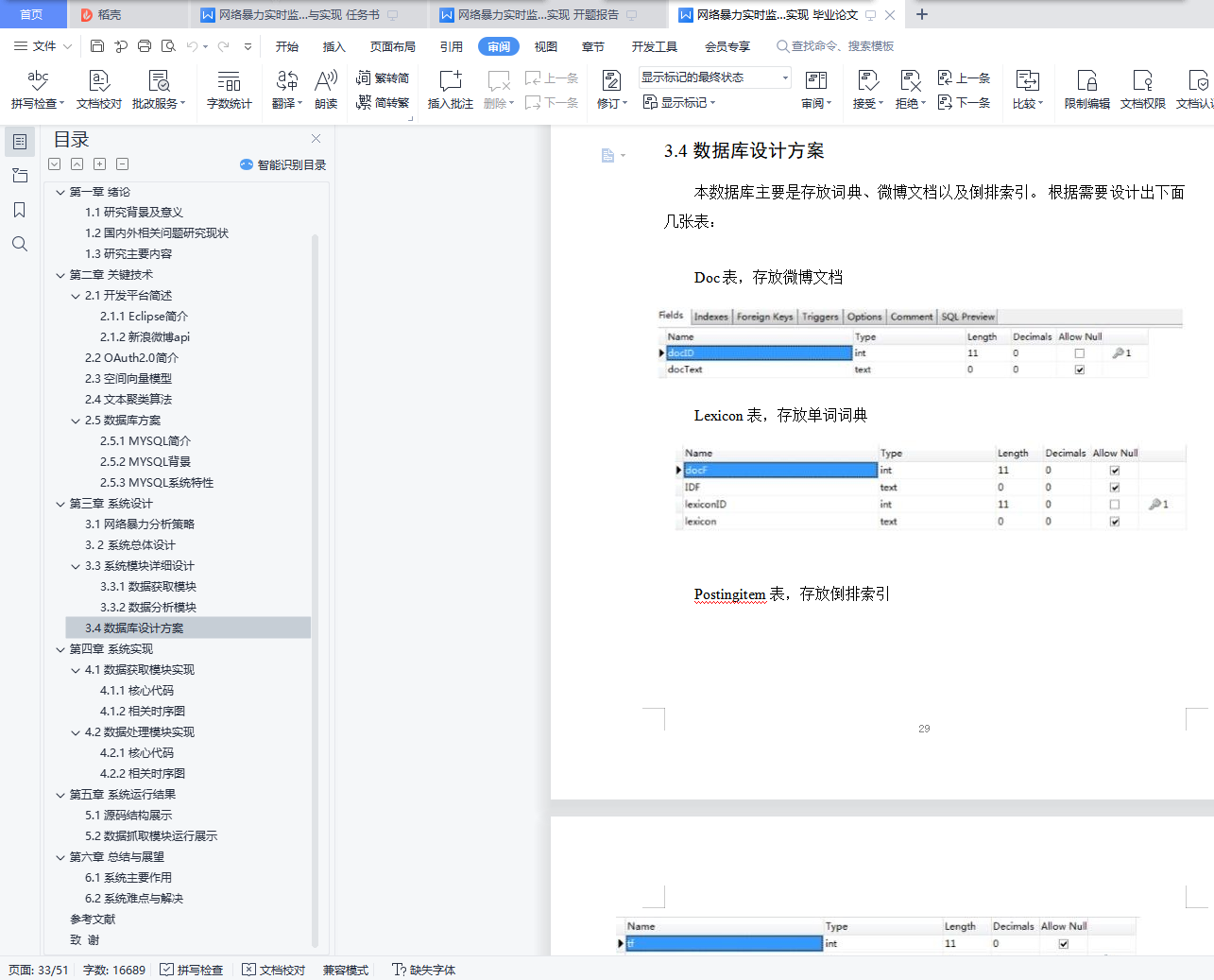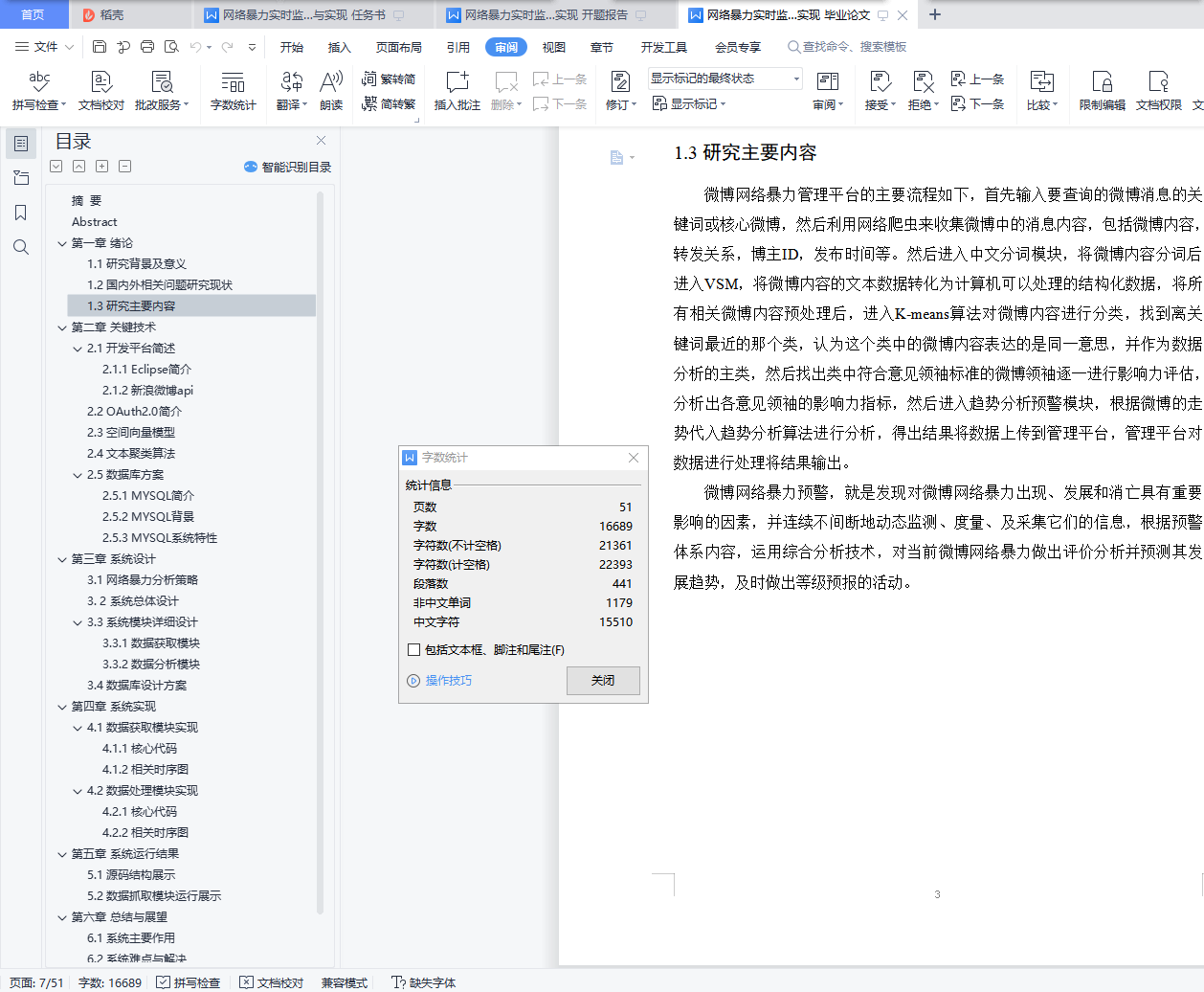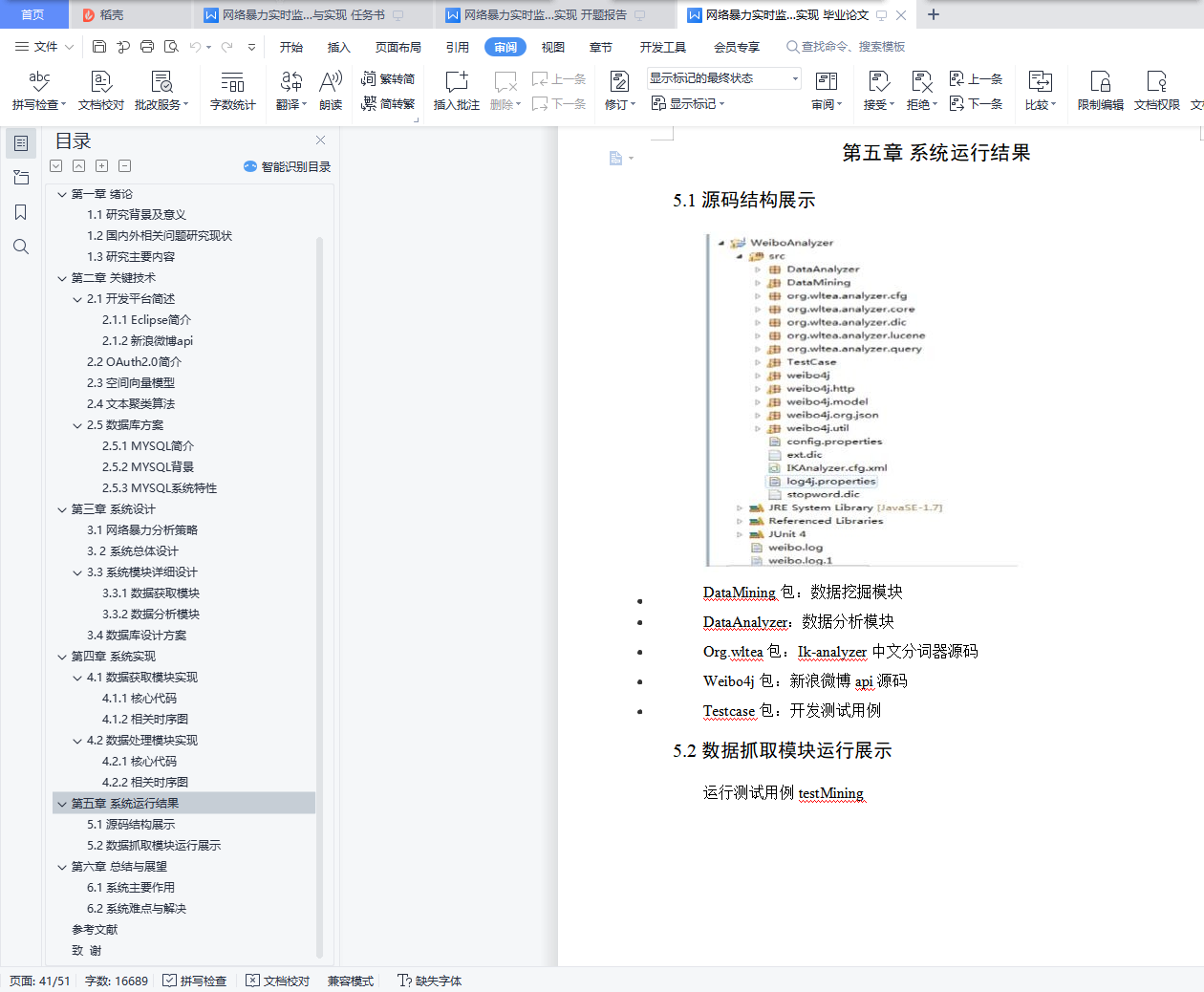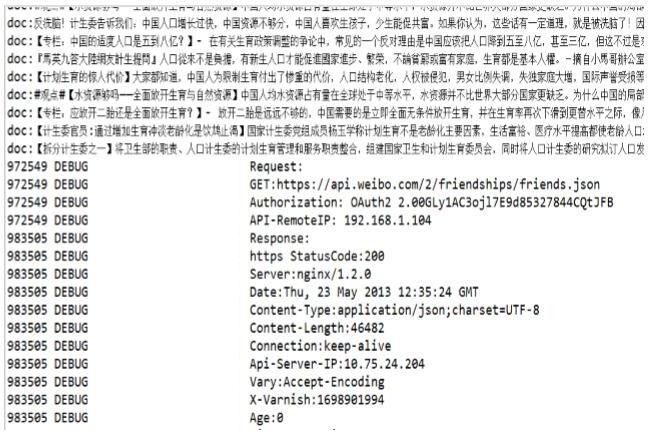摘 要
网络暴力是社会民众,在一定的空间内,对自身关注或与其密切相关的各类事件所持有的多种情绪和意见交错的综合。当前网络暴力信息呈现"爆炸"态势,特别是突发流行事件,会马上引发各种社会团体的关注。在此情况下,要人工鉴别每一具体情况并加以归类统计难度很大。而采用计算机技术对网络暴力信息进行分析,能够建立起有效的监控预警机制。因此,加强网络暴力分析监控技术的研究已成为一项紧迫而又重要的课题。
基于此背景,本文针对网络暴力分析监控的实现技术和具体应用进行了研究。利用空间向量模型完成对微博内容的结构数据化,利用K-means算法完成对微博消息的聚类分析,找到所要分析的某类微博内容,进而在这类微博中找出微博消息意见领袖,提出微博意见领袖影响力评估算法,WeiboRank算法,并结合算法完成微博消息预警模块的实现,初步实现微博网络暴力管理平台的数据预警分析功能。
本文介绍了系统设计与实现的背景技术,分别是B/S体系架构、JSP技术、JavaBean技术、Web服务技术和数据库技术。
关键词:微博,网络暴力分析,向量空间模型,k-means聚类算法;监控
Abstract
Network violence is a combination of many emotions and opinions held by social people in a certain space. At present, the information of network violence presents a "explosion" situation, especially the unexpected and popular events, which will immediately arouse the attention of various social groups. In this case, it is very difficult to manually identify each specific situation and classify it. Using computer technology to analyze network violence information can establish an effective monitoring and early warning mechanism. Therefore, strengthening the research of network violence analysis and monitoring technology has become an urgent and important topic.
Based on this background, this paper studies the implementation technology and application of network violence analysis and monitoring. Using the spatial vector model to complete the structural data of Weibo content, using the K-means algorithm to complete the cluster analysis of Weibo messages, find some kinds of Weibo content to be analyzed, and then find out the Weibo message opinion leader in this kind of Weibo. The influence evaluation algorithm and WeiboRank algorithm are proposed.
This paper introduces the background technology of system design and implementation, namely B/S architecture, JSP technology, JavaBean technology, Web service technology and database technology.
Keywords: Weibo, network violence analysis, vector space model, k-means clustering algorithm; monitoring
目 录
摘 要
Abstract
第一章 绪论
1.1 研究背景及意义
1.2 国内外相关问题研究现状
1.3 研究主要内容
第二章 关键技术
2.1 开发平台简述
2.1.1 Eclipse简介
2.1.2 新浪微博api
2.2 OAuth2.0简介
2.3 空间向量模型
2.4 文本聚类算法
2.5 数据库方案
2.5.1 MYSQL简介
2.5.2 MYSQL背景
2.5.3 MYSQL系统特性
第三章 系统设计
3.1 网络暴力分析策略
3. 2 系统总体设计
3.3 系统模块详细设计
3.3.1 数据获取模块
3.3.2 数据分析模块
3.4 数据库设计方案
第四章 系统实现
4.1 数据获取模块实现
4.1.1 核心代码
4.1.2 相关时序图
4.2 数据处理模块实现
4.2.1 核心代码
4.2.2 相关时序图
第五章 系统运行结果
5.1 源码结构展示
5.2 数据抓取模块运行展示
第六章 总结与展望
6.1 系统主要作用
6.2 系统难点与解决
参考文献
致 谢
